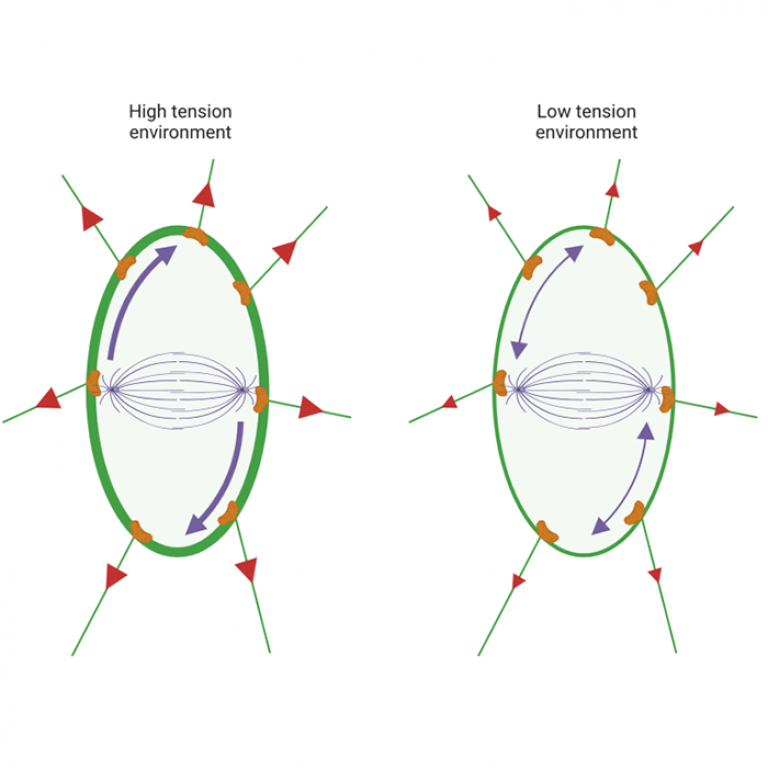New publication in Molecular Biology of the Cell for Baum, Charras and Mao Labs
22 April 2020
Isotropic myosin-generated tissue tension is required for the dynamic orientation of the mitotic spindle.

The ability of cells to divide along their longitudinal axis is thought to play a key role in maintaining epithelial tissue homeostasis. In a new publication in Molecular Biology of the Cell, Lam and colleagues find that in elongated cells, the ability for mitotic spindles to rotate to their correct orientation is dependent on their mechanical environment.
Abstract
The ability of cells to divide along their longest axis has been proposed to play an important role in maintaining epithelial tissue homeostasis in many systems. Because the division plane is largely set by the position of the anaphase spindle, it is important to understand how spindles become oriented. While several molecules have been identified that play key roles in spindle orientation across systems, most notably Mud/NuMA and cortical Dynein, the precise mechanism by which spindles detect and align with the long cell axis remain poorly understood. Here, in exploring the dynamics of spindle orientation in mechanically distinct regions of the fly notum, we find that the ability of cells to properly re-orient their divisions depends on local tissue tension. Thus, spindles re-orient to align with the long cell axis in regions where isotropic tension is elevated, but fail to do so in elongated cells within the crowded midline, where tension is low, or in regions that have been mechanically isolated from the rest of the tissue via laser ablation. Importantly, these differences in spindle behaviour outside and inside the midline can be recapitulated by corresponding changes in tension induced by perturbations that alter non-muscle Myosin II activity. These data lead us to propose that isotropic tension within an epithelium provides cells with a mechanically stable substrate upon which localised cortical motor complexes can act on astral microtubules to orient the spindle.
Links
- Research paper in Molecular Biology of the Cell
- Professor Buzz Baum's academic profile
- Professor Guillaume Charras' academic profile
- Dr Yanlan Mao's academic profile
- UCL MRC Laboratory for Molecular Cell Biology
- London Centre for Nanotechnology
- UCL Institute for the Physics of Living Systems
 Close
Close

